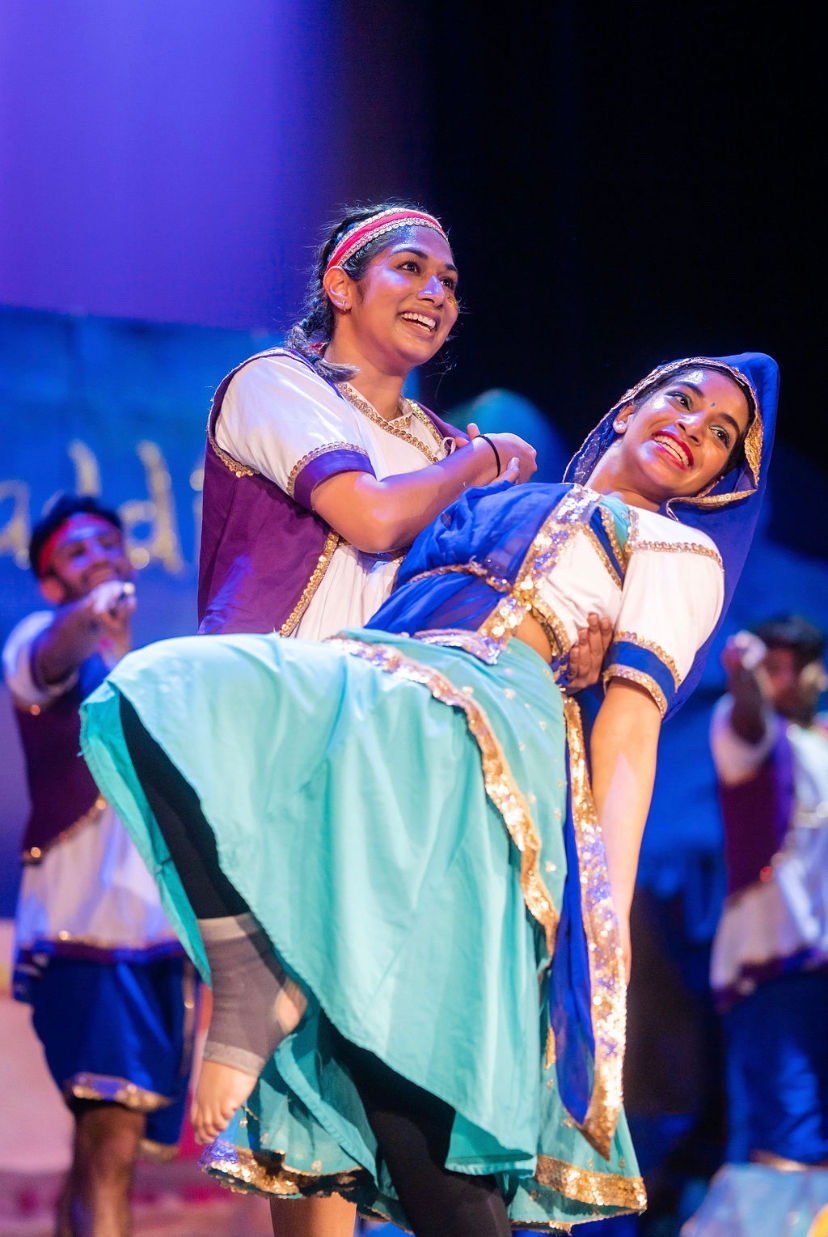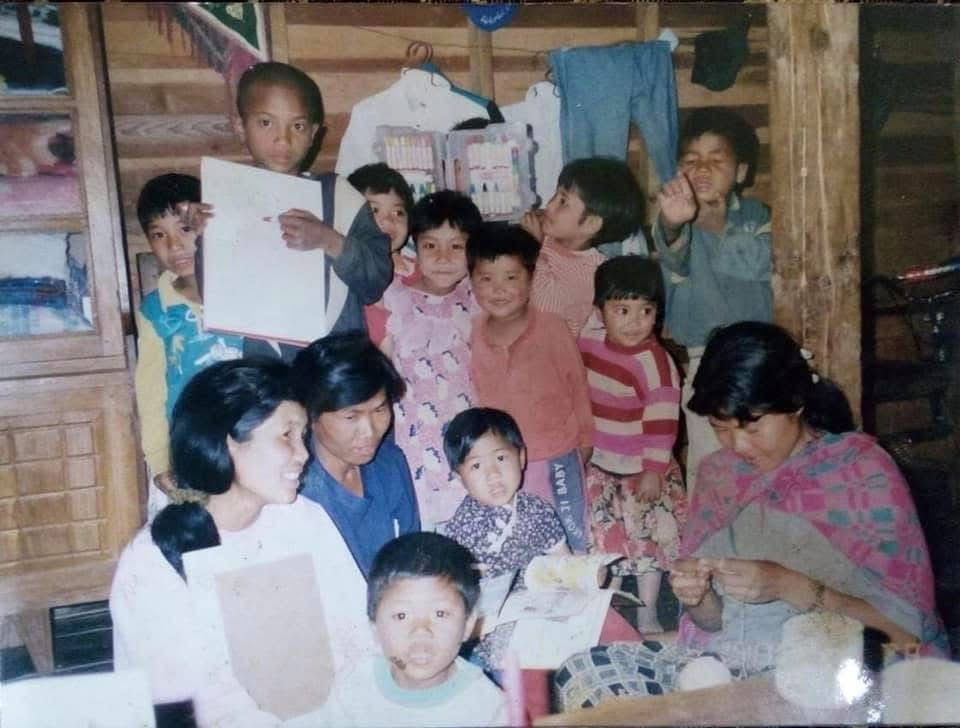Dancing in Grace and Gratitude
- Nikitha Manikonda

- Apr 11, 2024
- 5 min read
Updated: Jul 30
My name is Nikitha Manikonda. I am currently a junior at Virginia Commonwealth University (VCU) studying bioinformatics. I’ve been doing a form of Indian Classical dance known as Kuchipudi since the age of five. Kuchipudi is one of several classical dance forms in India. Kuchipudi originated as a dance drama tradition, in the village of Kuchipudi in the Krishna District of Andhra Pradesh, India. It began as an all-male performing art form and traversed through various regional indigenous dance forms, finally leading into the Solo tradition being performed now by both men and women. The main text that Kuchipudi is based on is the Natya Shastra. Per Natya Sastra, Kuchipudi depicts Nritta (pure dance), Nritya (dance to lyrics) and Natya (dramatization). Unique features of Kuchipudi include brisk footwork set to complex metric nuances, rounded, dip and rise, and graceful movements, like dancing on the rim of a brass plate, and control and balance.
Kuchipudi was the first dance form I was introduced to and it impacted my life in so many ways.

Initially, Kuchipudi was just an activity that my mom had put me in because she was also a dancer growing up and wanted to pass that down to me. However, Kuchipudi became my creative outlet and an escape from a medical condition I was diagnosed with at the age of ten.
Kuchipudi also allowed me to connect with my culture and finally embrace my identity.
At this point, I was no longer just dancing for my mom. I had a genuine love and appreciation for the art form and wanted to be the best I could possibly be. After eleven years of training, I completed a four-year course (two junior and two senior level certificates) in Kuchipudi through the organization SAMPADA. SAMPADA certification is done by SiliconAndhra in affiliation with Potti Sreeramulu Telugu University (PSTU), a NAAC-accredited institution. All four of these exams have a theory and a practical section. Each practical exam has about four to five dances that are each ten minutes long and that have to be performed. Every theory exam is a written test on the history and significance of all of the techniques and skills used in the Kuchipudi.
After completing my four certifications I wanted to take it one step further and complete my Rangapravesam. A Rangapravesam is a solo dance debut of the Kuchipudi dance form. In India, it is typically the first stage performance of a dancer; however, in America, it has turned into a final solo performance before going to college. A dancer usually completes five or six items, each 10 minutes in length. The unique aspect of a Kuchipudi Rangapravesam is that it includes an item called a Tharangam (20-30 minutes in length) which includes the dancer dancing on the rim of a brass plate. A Rangapravesam usually takes nine to twelve months of rigorous preparation due to the length and complexity of the performance. For my Rangapravesam, however, I only had one month of in-person practice due to the COVID-19 pandemic.
The last item I had left to learn out of my six chosen items was my Tharangam. I ended up learning it completely virtually through Zoom during the first semester of my senior year of high school. I then spent the next semester building my endurance and refining the rest of the songs I had already learned. During the last month of my training, I was finally able to meet my teacher in person and get critiques on my whole program. I went through a roller coaster of emotions balancing all of the ins and outs of my senior year along with my intense practice schedule but it was all worth it.
I ended up becoming the first student from my academy to complete a Rangapravesam; it was truly a dream come true and one of my proudest achievements!

When I came to college my goal was always to continue dancing but I wanted to try a new style this time. My university also did not offer an Indian classical dance team when I began college, so I was going to have to try something new. I ended up joining VCU Ricochet Raas, my school’s premier Raas/Garba team. Raas/Garba is a form of dance that involves twirling dandiyas (wooden sticks) and it originated in the Indian state of Gujarat. Raas is a very high-intensity dance and has a very specific technique that is nothing like Kuchipudi. This took a lot of getting used to, especially after learning Kuchipudi for twelve years.
During my sophomore year, I gained enough experience to be a part of the competition team. I got to travel around the country with my team and compete in the official Raas All Stars Circuit. Raas All Stars is the national intercollegiate circuit that conducts several competitions throughout the country for dancers to participate in. They also host a national competition at the end of the regular competition season for the top nine teams in the country where they award the top two teams. At the end of my sophomore year, I decided to apply to be a choreography chair on the executive board of our team. I wanted to be more involved in our routine and help bring the set to life. Every team chooses a theme for their set at the beginning of the season that they base their choreography and gimmicks around.
During the 2023 season, my team chose the theme Aladdin, incorporating things like Princess Jasmine, the magic carpet, the cave of wonders, the genie, Abu, Jafar, and a magic lamp. During our 2024 season, I got the position of choreography chair and helped make our Shaadi (Indian wedding) set. We included things like a proposal gimmick and aspects of a traditional Indian wedding such as a Haldi, Mehendi, and taking seven steps around the fire with your partner. I’ve grown so much as a dancer through these past three years and loved being able to contribute to the circuit in many different ways.
In addition to being a dancer, I joined the executive board of VCU’s local Raas competition, River City Raas, during my sophomore year. I was one of the three mixer chairs both last year and this year, and it was so fun to be a part of the other side of the circuit! Mixer is an event that we put together for all the competing teams the day before the competition to help determine the show order in a non-biased way, and for teams to meet and get to know each other. Similar to competitive Raas sets, every competition also has a theme. In 2023, we did a horror story-style theme and this past February our theme was interstellar. Being a part of this competition board allowed me to get closer to so many people who wanted to stay involved in their communities; it also allowed me to participate in the Raas circuit without specifically dancing.

As I reflect on my journey from the stages of Kuchipudi to Raas, I am filled with an overwhelming sense of gratitude and fulfillment.
Each step I've taken, every beat I've danced to, has woven together so many experiences that have shaped not just my identity as a dancer, but as a person.
From the disciplined training of Kuchipudi to the exhilarating competitions of Raas, there’s no better feeling than the adrenaline rush of performing on stage. Dance has not only been my passion but also my expression and my connection to both heritage and community. Dance has taught me so many lessons and I have made so many memories and best friends along the way. As I look forward to the adventures that await, I do so with a heart full of gratitude for the journey that has brought me here and I can’t wait to see what the future holds for me.
Photography courtesy of and written by Nikitha Manikonda.















Comments